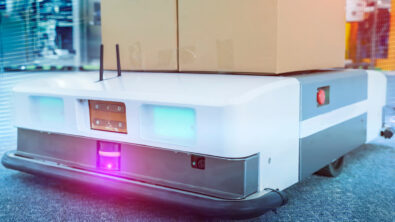The Future Medical Device Manufacturing – Accelerating Digital Transformation

Digital Transformation and Smart Manufacturing are concepts that can be realized today with state-of-the-art technology. Most manufacturers have digitalized at least parts of their manufacturing operations. Some industries, like Automotive, are much closer to a complete digital manufacturing enterprise. The lasting impact of COVID-19 on Medical Device manufacturing, which is relatively early in their digital transformation journey, is an acceleration of their investment roadmap.
Some of the more obvious benefits of Manufacturing Operations Management solutions will be first priorities, such as a Manufacturing Execution System (MES) for shop floor process orchestration and enforcement, or an Advanced Planning and Scheduling (APS) system for optimizing manufacturing resources. Those are requirements for achieving “closed-loop manufacturing,” or the ability to connect production to design. You need the MES and APS to have the data for the digital twin to perform simulations, then you need those systems to execute against the optimal simulation scenario (see Part 2 of this blog series).
With product development, we now see the criticality of the connection between design and manufacturing. If you are trying to shift from knee implant to ventilator, you can’t have design engineers developing new parts without understanding the capabilities of the machines on the shop floor. The thread must be there to shift left, to connect what engineers are designing, and what can actually be produced. This is the gap in the design transfer from R&D to Manufacturing and Operations.
Investment in additive manufacturing capabilities will accelerate. If we want to increase the ability to expand and contract capacity across industries, it will require a true digital representation. For a 3D company to receive the design and specification, they will need to be able to translate eBOMs into mBOMS and pBOMS. The intelligence must exist in the metadata of the BOMs. The entire file concept must be transferable from engineering to manufacturing to operations to supply chain. That information must be shared and consumed immediately, with verification and validation, testing, as well as 3D instructions.
Intelligence and analytics is another area that will mature more rapidly than pre-pandemic plans. Smart connections with intelligent machines and devices will more tightly couple the virtual and physical realms. If we want to leverage that intelligence and connectedness, we will need effective predictive analytics and prescriptive analytics. If something is wrong, or something is about to go wrong, what should I do right now?
Augmented reality (AR) and virtual reality (VR) will become more pervasive. Employees who are in the manufacturing facility with a maintenance or repair issue can leverage expertise from engineers working from home. The operator’s goggles are transmitting images so the remote engineer can see what the operator sees. The remote expert can help the operator commission or repair the machine. It will become a new norm in maintenance, training, and general problem solving. We can scale faster and more cost-effectively with specialty and high-cost resources assisting a broader, less expensive set of resources.
There are also implications for new product services for medical professionals. Nurses can have training on the operation of new machines with AR/VR. We can also use the intelligence of the machine to notify a product support specialist that the machine was used improperly or out of sequence. This is not simply a cost efficiency, this is a quality play, and a new business model.
The implication for the healthcare ecosystem
We at Siemens are collaborating with various government agencies to demonstrate the value of creating virtual representations of a smart factory, whether it be a medical device or a pharmaceutical. Think about a modular home. You pick this design and have it dropped onto a flatbed and delivered to your property. We are doing the same thing – how do we do a drop in a smart manufacturing facility to a new geography, in a safe and cost-effective way? We are investing heavily to figure out how to solve these problems in a larger and more economical capacity.
Given the complex life sciences ecosystem that comprises providers, vendors, and regulatory bodies, we have created a “safe space” to collaborate with various stakeholders on these solutions. We are breaking down barriers, creating a collaborative safe space between the regulatory body and the regulated entity, so we can get solutions to the market faster. Many of the leading medical device and diagnostics manufacturers are collaborating with us and the FDA on different projects related to digitalization. While FDA’s Case for Quality helped create an opportunity for engagement, the current pandemic has accelerated the need for collaboration to work on these types of initiatives. Speed is critical, and we can’t have entities working against each other. This is getting to the true intent of regulation – keeping patients safe and healthy, which means ensuring availability of critical medical supplies and getting potential cures to market faster.
In the future, we will also see a tighter coupling of the various technology sectors in healthcare. Collaboration between human genome, pharmaceuticals, and medical device companies will get to breakthrough solutions delivered to the population more rapidly. The gaps we see in these fields of expertise is slowing down our response to the pandemic, and the industry is recognizing this. We will be seeing much better cross-pollination in the future, with these sectors coming together more intimately during the design and production process. Once we get a vaccine that has been simulated with human DNA, we need the syringes to deliver it on a massive scale.
Having the entire network available to make the treatment is a massive trend that will help everyone. We are driving towards patient-specific outcomes, personalization of treatment. That promises better outcomes for patients, but also helps manufacturers reduce inventory. It reduces the overall cost of healthcare if payors don’t pay for a second or third treatment. It is better for doctors and hospitals because they can accommodate more patients, which drives revenue and margin. It is a win-win across quality and cost, ultimately resulting in a more efficient healthcare system. Most importantly for the future, how do we intimately connect this whole ecosystem – maintaining a true digital thread across the various sectors. It will allow us to be faster, more agile, and more able to meet the needs of our patients. If we can connect everything digitally and intelligently, if another pandemic comes, hospitals will be ready with the needed capacity, doctors will be ready with the appropriate protective gear to keep them safe, vaccines will be rapidly developed, manufacturers will ramp up production of needed equipment. If we leverage the technology at our fingertips today, all of this can be done quickly.


